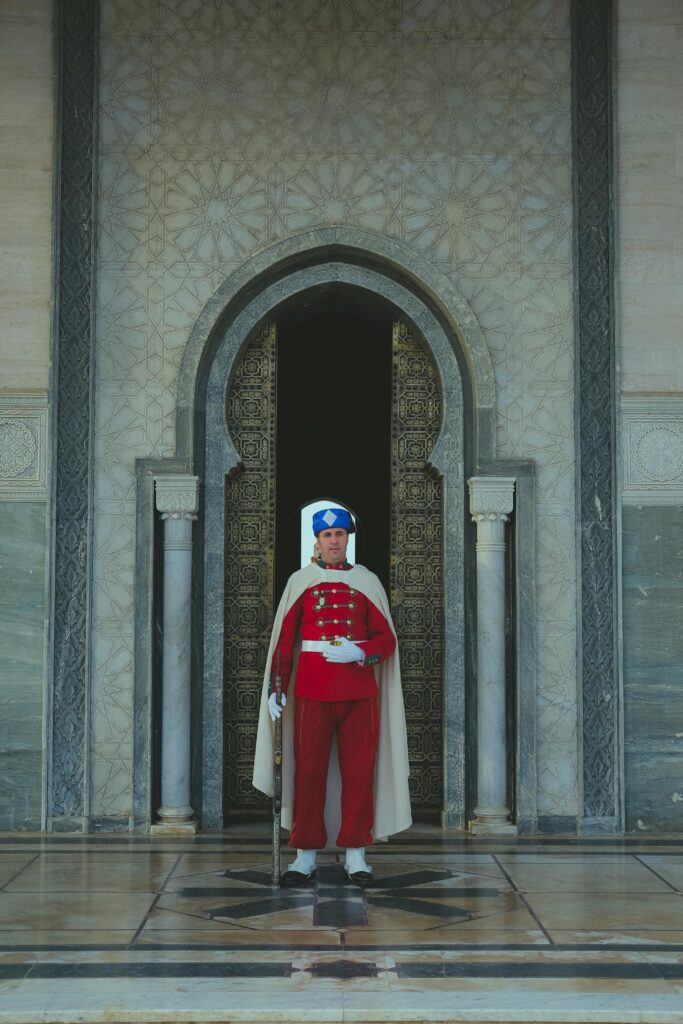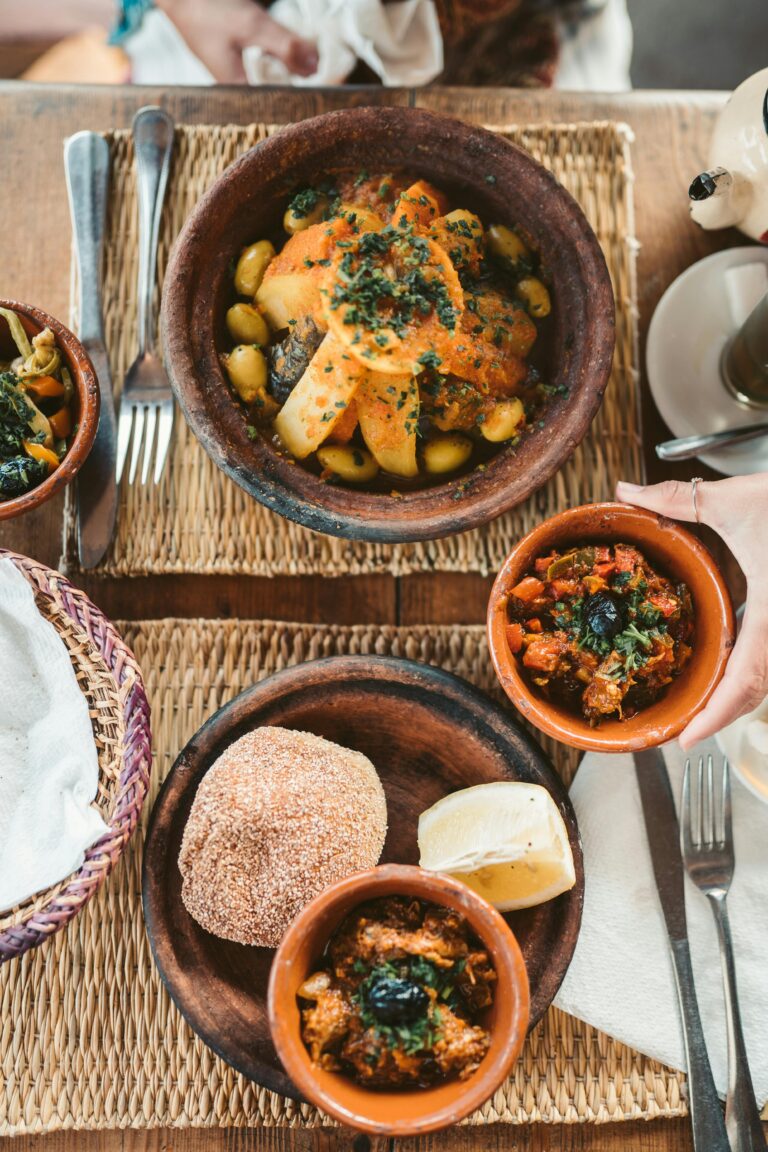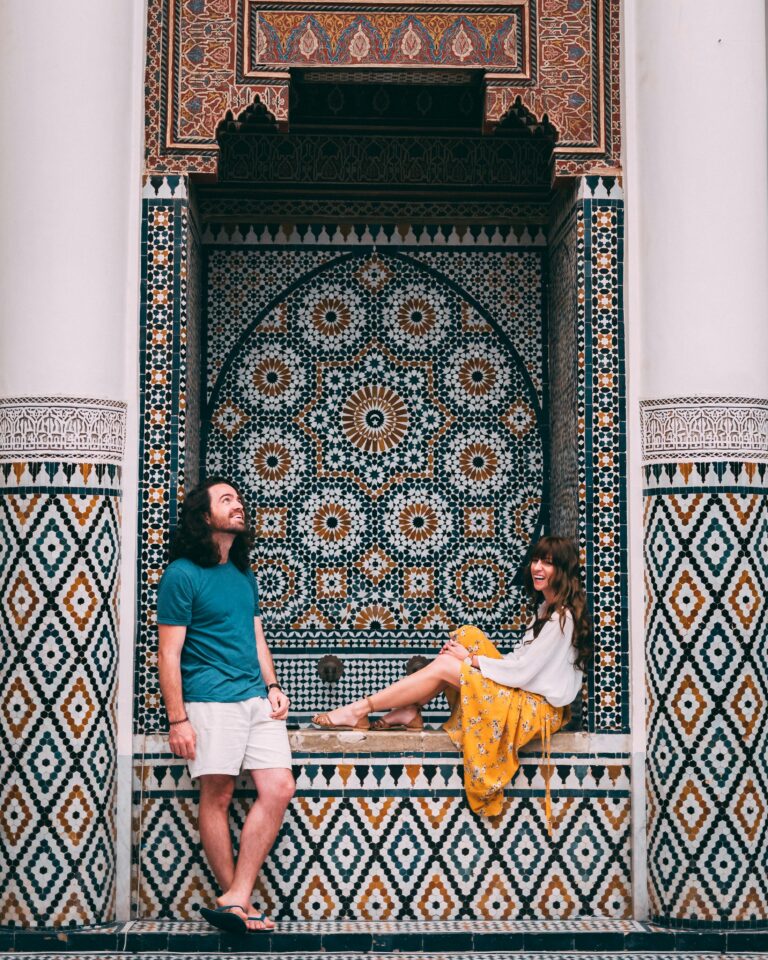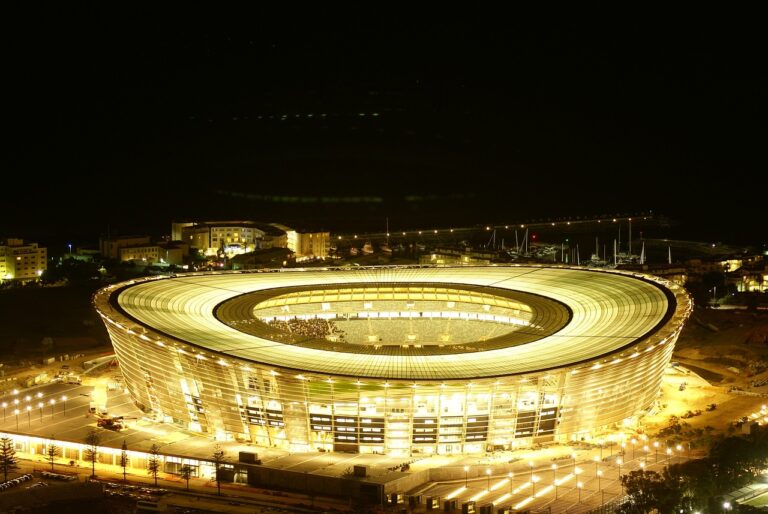
Discover with Travel Casita Morocco.
Morocco, a land steeped in history, offers a mesmerizing tapestry of cultures, languages, and traditions interwoven through centuries of diverse influences.
From the Berber mountains to the bustling streets of Marrakech, Moroccan culture is a vibrant nursery of ideas, practices, and artistic expressions that reflect the complexity of its society.
Travel Casita post delves into the multifaceted aspects of Moroccan culture, examining its roots, artistic heritage, and the ways in which it continues to evolve, nurturing a profound sense of identity among Moroccans today.
A Confluence of Civilizations
At the crossroads of Europe, Africa, and the Middle East, Morocco has long been a melting pot of civilizations. The deep historical roots of Berber (Amazigh) tribes, the profound influence of Arab culture following the 7th-century Muslim conquests, and the later interactions with the Portuguese, French, and Spanish have contributed to a unique sociocultural landscape. This blend of influences is evident in the country’s languages, traditions, and daily life.
Linguistic Diversity
Morocco is home to linguistic diversity, with Arabic and Amazigh as the official languages. The Moroccan dialect of Arabic, known as Darija, incorporates elements from French, Spanish, and Berber languages, serving as a testament to the nation’s multicultural identity.
Additionally, French is widely spoken, especially in urban areas, due to Morocco’s colonial past. This linguistic amalgamation represents a living narrative of coexistence and adaptation, as Moroccans navigate their identities through language.
Traditional Arts and Craftsmanship
Travel Casita discover One of the most visually striking aspects of Moroccan culture is its artisanal heritage. Morocco is renowned for its exquisite handicrafts, which have been passed down through generations and reflect the country’s rich artistry.
Pottery and Ceramics
Moroccan pottery, particularly from regions like Fez and Safi, is celebrated for its intricate designs and vibrant colors. Artisans showcase their skills by hand-painting tiles and creating elaborate tagines.
The traditional blue and green hues, often associated with Moroccan ceramics, are more than aesthetic choices; they carry historical significance rooted in Islamic art and architecture.
Textiles and Weaving

The breathtaking textiles of Morocco, often woven from wool, cotton, and silk, are another hallmark of its cultural identity. Berber rugs, with their unique patterns and colors, tell stories of the tribes that created them.
Each rug represents a distinct narrative, rich in symbolism and tradition. The art of weaving is a communal activity, particularly among women, fostering social bonds and preserving cultural heritage.
Leatherworking
Fes, one of Morocco’s oldest cities, is famous for its leather goods, particularly its unique tanneries. The traditional method of tanning leather has remained unchanged for centuries, with artisans using natural dyes to create vibrant colors. Each item from handbags to slippers reflects the skill and dedication of Moroccan leather workers, contributing to a flourishing local economy.
Culinary Traditions
Moroccan cuisine is another crucial aspect of its cultural nursery. A fusion of Arab, Berber, and Mediterranean influences, it is characterized by its use of spices, fresh ingredients, and slow-cooking techniques.
Tagine and Couscous
The iconic tagine dish, named after the earthenware pot it is cooked in, exemplifies the essence of Moroccan cooking. Slow-cooked stews made with a variety of meats, vegetables, and spices, tagines offer a sensory experience that embodies the hospitality of Moroccan culture. Couscous, the national dish, made from semolina wheat, is often served during celebratory meals and holds a central place in Moroccan family gatherings.
Mint Tea
A symbol of hospitality, Moroccan mint tea, or “atay,” is a cherished ritual in Moroccan society. The elaborate preparation and presentation of tea is more than just a drink; it is a communal activity that fosters friendship and strengthens social ties. The practice illustrates the Moroccan spirit of generosity and warmth towards guests.
Architecture and Urban Design
The architectural landscape of Morocco is a testament to its rich cultural heritage. From the ancient kasbahs and medinas to the elaborate palaces and mosques, the architectural elegance of Morocco speaks to its historical narrative.
The Medina
The medinas of cities such as Marrakech, Fes, and Essaouira are a UNESCO World Heritage site, showcasing an impressive blend of Islamic, Berber, and Moorish architecture.
The intricate zelliges (mosaic tiles), ornate woodwork, and stunning fountains reflect the artistic mastery of Moroccan artisans. Wandering through the narrow, winding streets of the medina offers a glimpse into the daily lives of Moroccans, where tradition thrives side by side with contemporary practices.
The Riads

Riads, traditional Moroccan houses with an interior garden or courtyard, represent a unique architectural style rooted in practicality and aesthetics.
Often adorned with colorful tiles and intricate plasterwork, riads serve as tranquil oases amidst the bustling city life, embodying the Moroccan ethos of privacy and serenity.
Cultural Continuity and Innovation
While deeply rooted in tradition, Moroccan culture is not static. The country is witnessing a vibrant cultural revival, where modern influences intertwine with age-old practices. Young Moroccans are increasingly redefining cultural boundaries through art, music, and fashion, fostering a dynamic cultural dialogue.
Contemporary Art
In recent years, Morocco has emerged as a hub for contemporary art, drawing inspiration from its historical and social context. Galleries across cities like Marrakech and Casablanca showcase the works of local and international artists, creating a platform for dialogue on identity, heritage, and social issues.
Music and Performance
The allure of traditional Moroccan music, with its captivating rhythms and melodies, continues to thrive. Genres such as Chaabi, Andalusian, and Berber music resonate deeply within Moroccan society, often performed during cultural festivals and celebrations.
At the same time, young musicians are blending traditional styles with global influences, creating a fusion sound that resonates with the younger generation.
Moroccan culture is a rich nursery !
Moroccan culture is a rich nursery that nurtures the diverse threads of its heritage while embracing change and innovation. Its artistry, culinary delights, architectural grandeur, and rich traditions are woven into the daily lives of Moroccans, reflecting a profound sense of identity.
As Morocco stands at the threshold of modernity, it continues to honor its past while confidently paving the way for a vibrant cultural future. By exploring its cultural nursery, we gain insight into a unique aspect of humanity’s tapestry one that continues to inspire, educate, and connect people across the globe.




